Image generation with artificial intelligence (AI) has revolutionized the way we create and interact with visual content. In this context, the seed has become an essential tool for artists, designers, and enthusiasts, offering an unprecedented level of control over the creative process.
In essence, the seed is a numerical value that acts as a starting point for the AI algorithms responsible for generating images. Think of it as a unique "fingerprint" for each image.
When you enter a prompt (textual description) into an AI, along with a specific seed, the algorithm uses that value as the base for the image creation process.
This means that by using the same prompt and the same seed, you'll get very similar visual results, although minor variations may occur due to the probabilistic nature of diffusion algorithms.
Generating an image without a seed:
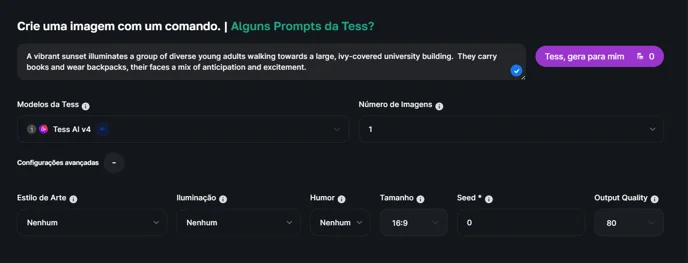
Notice that the seed is zeroed out at the moment the image is generated.
The result:
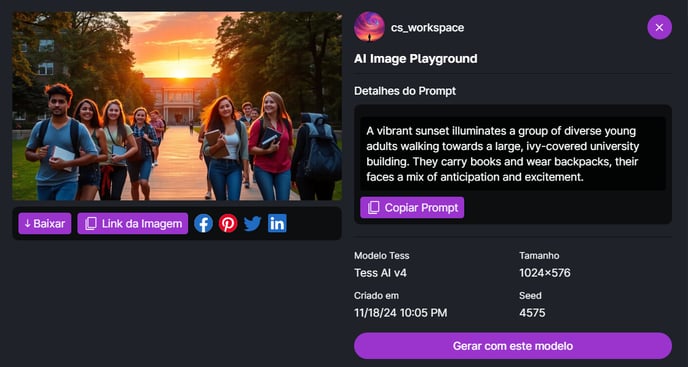
Now, with the same prompt, but filling in the seed field, I'll generate an image:
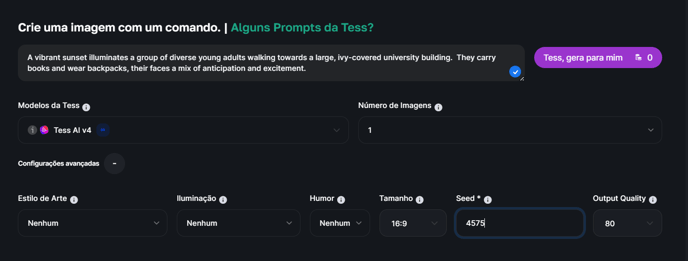
Notice that the images turn out almost the same when we use the seed code to generate the second image:

The Power of Reproduction and Refinement
The big advantage of the seed lies in its ability to reproduce images with high fidelity. This is crucial for refining a visual concept.
Imagine that you generated an image you like, but it needs a few adjustments. By keeping the seed unchanged and only modifying the prompt, you can explore variations of the image while preserving its key characteristics, like composition, color palette, and overall style. This precise iteration capability lets you reach the perfect image more efficiently.
In the example below, we’ll change the prompt but use the seed from the previously generated image:
The result with some image adjustments:
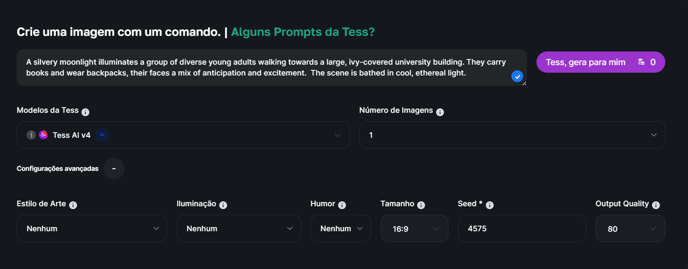
Simplified Collaboration and Sharing
Besides individual control, the seed also makes collaboration between creators easier. By sharing the seed and the prompt you used, you let others recreate your image with precision. This opens doors for idea exchange, joint experimentation, and collaborative image creation, making the creative process more dynamic and interactive.
To copy the prompt used, just click on the generated image, and after enlarging it, copy the prompt and seed as shown in the image:
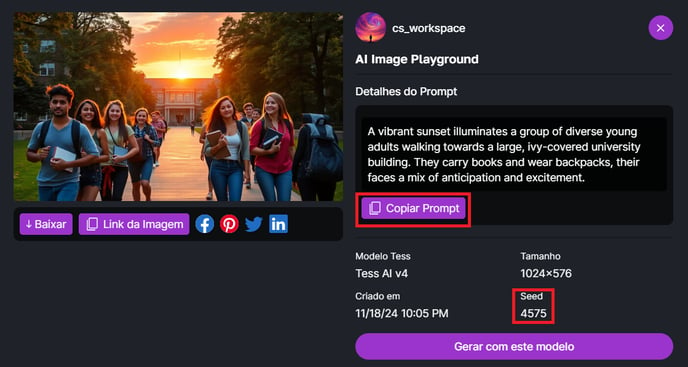
Exploring the Creative Possibilities of the Seed
The versatility of the seed extends to many creative applications:
Consistency in Series: When creating a series of images with common visual elements, like characters or settings, the seed ensures aesthetic consistency across the entire set.
Style Discovery: Try out different seeds with the same prompt to explore different visual interpretations of the same idea. This practice can lead to the discovery of innovative styles and approaches.
Precise Control: The seed allows granular control over the generation process, enabling subtle adjustments and refinements that would be difficult to achieve by just tweaking the prompt.
The seed is more than just a number; it’s the key to unlocking the full creative potential of AI image generation. By mastering the use of the seed, you take control of the process, exploring new possibilities and achieving visual results that are more refined, consistent, and aligned with your artistic vision.
Use the seed in image generation with AI in the following situations:
Objective: Perfect an existing image without losing its essential characteristics.
Scenario: You created an image that’s almost perfect but needs adjustments in details like lighting, colors, or element positioning.
How to use: Keep the original seed and modify the prompt, adding or changing the desired details. The AI will generate variations of the original image, allowing you to pick the one that best suits your needs.
Objective: Maintain visual consistency in a set of images.
Scenario: You’re creating characters for a game, illustrations for a book, or any project that requires a unified visual identity.
How to use: Use the same seed as a base for all images in the series. Modify the prompt to create variations of the character, object, or setting while keeping the aesthetics and style consistent.
Goal: Experiment with different visual approaches for the same concept.
Scenario: You have an idea in mind, but you're open to exploring different artistic styles, color palettes, and compositions.
How to use: Keep the prompt fixed and try different seed values. Each seed will produce a unique visual interpretation of your prompt, allowing you to discover new possibilities and find the ideal aesthetic for your project.
Goal: Share and replicate images with precision.
Scenario: You want to share your work with other creators, get feedback, or allow collaborators to work from your base image.
How to use: Share the prompt and the seed used. Anyone with access to an image-generating AI will be able to faithfully reproduce your image, ensuring consistency and making collaboration easier.